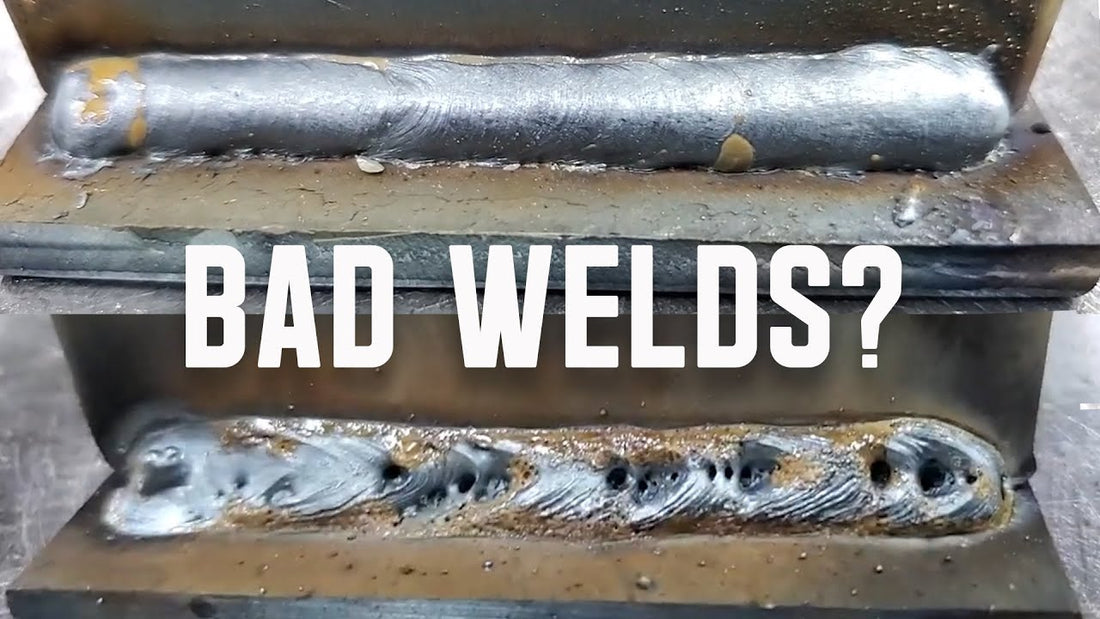Preventing Weld Undercut Made Easy: Trick Techniques Introduced
Preventing Weld Undercut Made Easy: Trick Techniques Introduced
Blog Article
Understanding the Causes and Solutions for Undercut Welding in Metal Fabrication Processes
In the realm of metal fabrication processes, the incident of undercut welding presents a substantial obstacle that requires a thorough understanding of its reasons and feasible remedies. The detailed interaction of different aspects throughout welding operations can result in this undesirable phenomenon, impacting the architectural honesty and general high quality of the welded joints - Preventing weld undercut. By dissecting the source of undercut welding and discovering efficient restorative steps, fabricators can boost the criterion of their craftsmanship and make sure the production of flawless steel elements
Common Causes of Undercut Welding
Regularly ignored in metal fabrication, undercut welding takes place because of various variables that require precise focus and expertise to be properly alleviated. One usual source of undercut welding is too much warmth input. When the heat input is too expensive, it can cause the melting and subsequent disintegration of the base material along the sides of the weld joint, producing a groove or undercut. In addition, incorrect welding strategies, such as using the wrong welding angle or travel speed, can also add to damage formation. Inadequate shielding gas protection is one more vital factor that can cause undercutting. Not enough gas insurance coverage stops working to shield the weld pool properly, bring about oxidation and undercut problems. In addition, the choice of welding specifications, such as voltage, current, and cable feed rate, plays a significant function in the event of undercut welding. Comprehending these usual causes is important for applying safety nets and making certain top quality welds in steel manufacture procedures.
Influence of Incorrect Welding Parameters
Inaccurate welding specifications can significantly endanger the stability and high quality of bonded joints in steel construction procedures. The influence of inaccurate welding specifications materializes in different ways, resulting in structural weaknesses and issues in the bonded elements. One important element impacted by incorrect welding parameters is the penetration deepness of the weld. Inadequate heat input due to reduced welding currents or exceedingly high travel rates can cause insufficient fusion between the base steels, resulting in incomplete joint infiltration and deteriorated bonds. On the other hand, excessive warmth input triggered by high welding currents or slow traveling speeds can lead to extreme and burn-through reinforcement, developing a fragile and unstable weld framework. Additionally, wrong specifications such as improper voltage setups or incorrect electrode angles can add to unpredictable weld grain profiles, absence of combination, and raised possibilities of defects like damaging. Precise focus to welding specifications is extremely important to make sure the manufacturing of premium welds with the wanted mechanical residential properties and architectural integrity.
Impact of Improper Torch Angle
Incorrect lantern angle in welding procedures can dramatically influence the top quality and integrity of the final weld joints in steel fabrication procedures. The lantern angle plays an essential role in identifying the warm input and distribution during welding. When the torch angle is incorrect, issues such as damaging can arise. Damaging is an usual welding issue where a groove develops along the weld toe, deteriorating the joint and endangering its architectural stability.
A torch angle that is also high can result in not enough infiltration, insufficient fusion, and raised spatter. On the various other hand, a lantern angle that is also superficial can cause too much infiltration, burn-through, and distortion of the base material. Preventing weld undercut. Correct torch angle is crucial for guaranteeing regular weld high quality, toughness, and appearance
To protect against undercutting and other defects triggered by improper lantern angles, welders need to be trained to keep the right torch angle throughout the welding process. Normal monitoring and adjustment of lantern angles during welding can assist accomplish sound welds with very little problems.
Function of Inadequate Welding Strategies

An additional element of insufficient welding methods is inappropriate weld preparation. Inadequate cleansing of the base steels, wrong joint design, or not enough edge preparation can all contribute to undercut welding. Inadequate securing gas protection or making use of the incorrect type of gas can result in incomplete blend and the formation of undercut my response problems.
To address the duty of insufficient welding methods in metal manufacture processes, it is vital to offer extensive training for welders. Proper education and learning on welding specifications, joint preparation, and securing gas choice can help protect against undercut welding and make sure premium welds in metal manufacture projects.
Reliable Solutions for Undercut Welding
Addressing undercut welding in steel construction calls for carrying out effective remedies to enhance weld top quality and structural honesty. One of the key services to battle undercut is to change welding parameters such as voltage, present, and travel speed to make certain appropriate warmth input and fusion. By fine-tuning these setups, welders can prevent extreme melting of the base steel and filler material, lowering the possibility of undercut development.
Additionally, appropriate joint prep work is important in protecting against undercut. Guaranteeing tidy base metal surfaces without contaminants and utilizing the ideal bevel angle can help promote far better weld infiltration and decrease the danger of undercut - Preventing weld undercut. Using suitable welding methods, such as weaving or oscillating the lantern, can also help in dispersing warmth equally and filling the weld joint effectively, decreasing the opportunity of undercut problems
Moreover, picking the proper welding consumables, consisting of why not try these out electrodes and filler metals, is important in alleviating undercut. Making use of products with ideal chemical compositions and mechanical buildings can add to attaining audio welds with minimal undercut. Regular evaluation and quality assurance steps must likewise be carried out to find and resolve undercut concerns without delay, making certain the total honesty of produced steel elements.

Final Thought
Finally, comprehending the causes and solutions for undercut welding in steel manufacture procedures is important for accomplishing premium welds. By dealing with common causes such as wrong welding criteria, incorrect torch angle, and inadequate welding strategies, welders can stop undercutting and make certain solid, resilient welds. It is important to take notice of these variables and carry out effective solutions to boost the general welding process and end product top quality.

Report this page